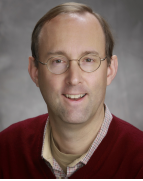Interactions of Light and Charge with Nanoporous MetalOrganic Frameworks
 Tuesday July 21, 2015
Tuesday July 21, 2015
Noon – 1 pm
Texas Instruments (TI) Auditorium E-1
2900 Semiconductor Drive
Santa Clara, CA
map
TITLE: Interactions of Light and Charge with Nanoporous MetalOrganic
Frameworks
SPEAKER: Dr. Mark Allendorf, Senior Scientist, Sandia National Laboratories
ABSTRACT:
MetalOrganic Frameworks (MOFs) are a recently created class of supramolecular materials in which metal ions are coordinated to rigid organic “linker” molecules, creating a nanoporous structure with an exceptional degree of synthetic versatility. The length scales in these materials make them appealing for a variety of optoelectronic applications. However, virtually all known MOFs are insulators as a result of the largely ionic nature of the metallinker bonds, which severely limits their use in other types of electronic devices. Recently, we demonstrated a route to MOFs that become electrically conducting by introducing guest molecules into their pores (Guest@MOF). This presentation will discuss the transport of energy and charge within MOFs, illustrated by examples from our research on chemical sensing, radiation detection, light harvesting, thermoelectrics, and device fabrication. Our results suggest that Guest@MOF represents a novel class of electronic materials with the potential to bridge the properties gap between inorganic and organic conductors, providing a high degree of electronic tailorability combined with longrange order for high charge mobility.
SPEAKER BIOGRAPHY:
Dr. Mark D. Allendorf is a Senior Scientist at Sandia National Laboratories in Livermore, California and holds degrees in chemistry from Washington University in St. Louis (A.B.) and Stanford (Ph.D.). At Sandia, he leads efforts to develop the fundamental science and applications of metalorganic frameworks (MOFs) and related materials. Current research interests include chemical sensing, gas storage and separations, MOFs for electronic devices, and catalysts for biofuels production. His work has lead to over 170 publications. He is President Emeritus and Fellow of The Electrochemical Society and has received multiple awards for research, leadership, and teamwork, including a 2014 R&D100 Award for a novel approach to radiation detection.
AGENDA:
- 11:30 am – Registration & light lunch (pizza & drinks)
- Noon – Presentation & Questions/Answers
- 1:00 pm – Adjourn
